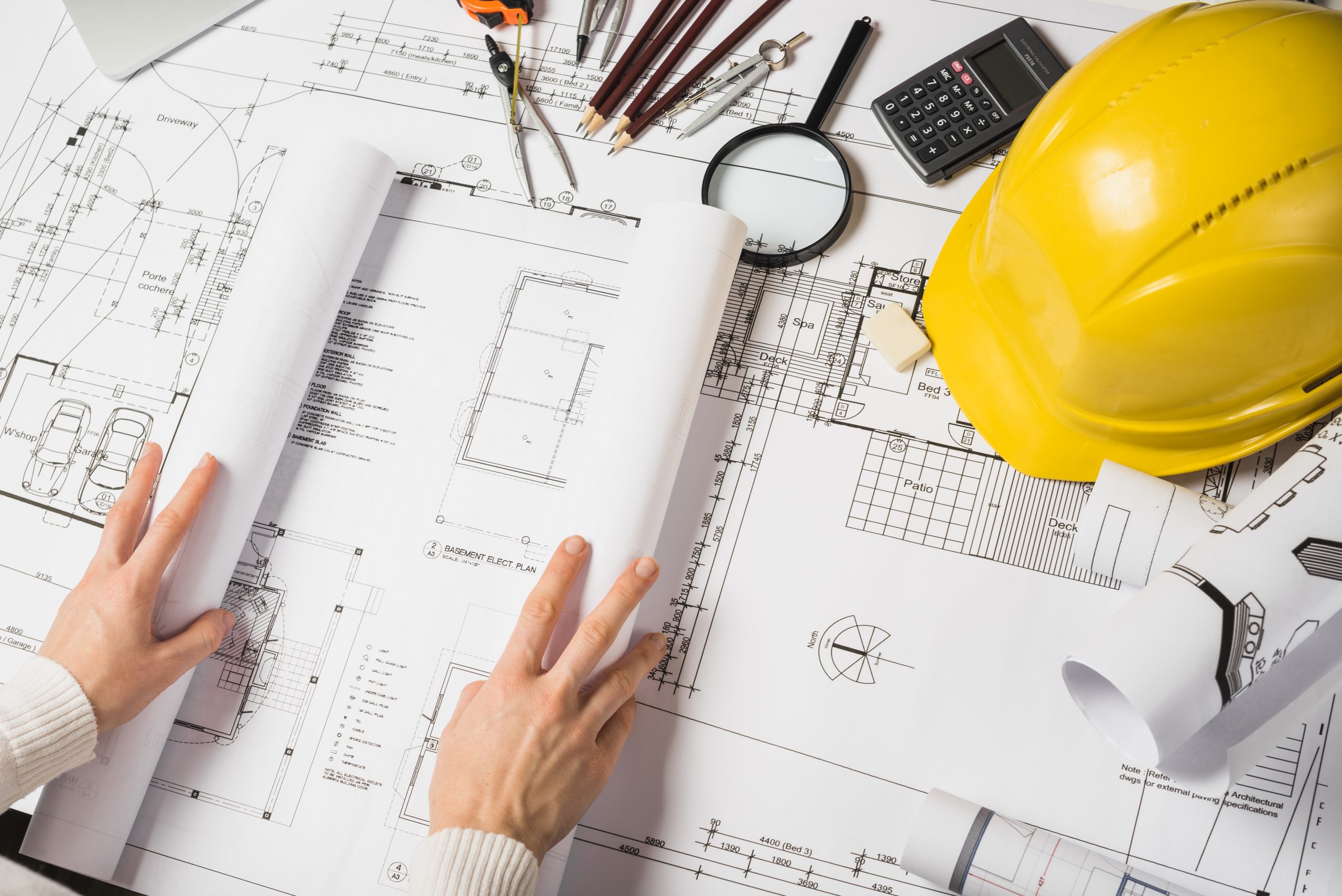Architect Collaboration Tips for Working with Consultants and Builders
Architect Collaboration Tips for Working with Consultants and Builders
Blog Article
Understanding the Diverse Occupation Paths Available for Aspiring Architect
As an aspiring Architect, you have a globe of profession courses waiting for you. Whether you're attracted to conventional design or the nuances of lasting style, there's a specific niche that lines up with your interests.
Standard Architecture: Creating Structures and Structures
Traditional architecture concentrates on making buildings and frameworks that blend capability with aesthetic appeal. As you explore this area, you'll value the intricate balance in between form and purpose. You'll find out to draw ideas from historical designs, including elements like symmetry, products, and craftsmanship. Your designs can reflect cultural heritage, showcasing neighborhood traditions while fulfilling modern needs.
You'll develop skills in composing, model-making, and website evaluation, permitting you to envision and interact your concepts efficiently. Engaging with customers, you'll need to recognize their vision and convert it right into feasible designs.
Furthermore, constructing codes and sustainability practices are crucial in your work, ensuring your frameworks are eco friendly and risk-free. As you expand in your career, you'll find opportunities in household, business, or perhaps remediation jobs, each offering one-of-a-kind difficulties. Welcoming typical architecture leads the way for a satisfying occupation that pays homage to the past while forming the future.
Urban Planning: Forming Communities and Public Spaces
As an aspiring Architect, you can play a vital role as a metropolitan planner, changing exactly how neighborhoods work and engage. By using community involvement techniques, you'll assure that homeowners have a voice fit their environment. Plus, incorporating sustainable style principles will certainly assist create spaces that not only fulfill today's needs however additionally shield the future.
Duty of Urban Planners
While many may consider designers as the sole enthusiasts behind buildings, metropolitan organizers play a necessary role fit the wider landscape of areas and public rooms. They evaluate land usage, zoning laws, and neighborhood needs to create sustainable atmospheres that improve lifestyle. By working together with different stakeholders, you'll aid design parks, transportation systems, and property areas that promote social communication and ease of access. Urban coordinators also concentrate on environmental factors to consider, making certain that developments incorporate eco-friendly areas and assistance biodiversity. Your competence in spatial design and community characteristics allows you to visualize future development while preserving cultural heritage. In this crucial function, you'll directly influence exactly how individuals experience their surroundings, making every project a possibility for positive modification.
Area Interaction Approaches
Effective area engagement strategies are essential for metropolitan organizers to ensure that the voices of residents are heard and valued in the planning process. To foster significant discussion, you should focus on open forums and workshops where community participants can express their ideas and worries. By actively integrating and paying attention responses, you'll produce spaces that reflect the community's needs, eventually leading to even more lasting and effective urban environments.
Sustainable Style Concepts
When creating urban areas, including lasting layout principles is essential for creating settings that grow both ecologically and socially. Consider integrating environment-friendly areas, like gardens and parks, to enhance biodiversity and boost air top quality.
Creating with water preservation in mind is additionally essential-- believe regarding rain gardens and permeable surface areas to take care of stormwater. Entailing neighborhood members throughout the planning procedure warranties that the spaces you create satisfy their requirements and urge social interaction. By accepting these principles, you'll contribute to vibrant, sustainable city landscapes that benefit every person.

Landscape Style: Creating Sustainable Outside Atmospheres
As you check out landscape design, you'll find important style concepts that develop functional and beautiful outside areas. Lasting methods play an essential duty in making sure these atmospheres grow while lessening ecological effect. And also, you'll discover a selection of career opportunities that allow you to make a genuine distinction in exactly how individuals connect with nature.
Style Concepts in Landscape
Recognizing layout principles in landscape style is important for producing sustainable outside atmospheres that harmonize with nature. You'll need to contemplate aspects like equilibrium, proportion, and range to guarantee your styles feel natural and inviting. Incorporating indigenous plants not only enhances biodiversity however likewise decreases water use, making your landscape durable. Consider the circulation of room and just how people interact with it; pathways and seating locations must welcome exploration and leisure. Additionally, take notice of seasonal modifications, creating with materials that match the surroundings year-round (Architect). By prioritizing sustainability and visual appeals, you can produce outdoor spaces that improve the community and advertise wellness. Embracing these principles will establish a solid foundation for your job in landscape architecture.
Sustainable Practices Overview
Lasting practices in landscape style not just concentrate on looks but additionally prioritize environmental wellness and source preservation. You can develop rooms that advertise soil health, such as practicing and utilizing natural products permaculture concepts. Ultimately, these practices guarantee your styles benefit both people and the setting for years to come.
Job Opportunities Exploration
With a solid foundation in sustainable methods, landscape this page style provides a selection of job paths that allow you to make a purposeful effect on the environment. Urban planners usually team up with landscape designers to create green spaces in city settings, enhancing city livability. If you're enthusiastic regarding education, think about ending up being a landscape design educator, motivating future generations.
Lasting Layout: Concentrating On Eco-Friendly Practices
As you explore your job in design, accepting environment-friendly practices can establish you apart in an affordable field. Sustainable design concentrates on creating buildings that minimize ecological influence while enhancing occupant well-being. By including sustainable materials, energy-efficient systems, and sustainable structure strategies, you'll add to a greener future.
Beginning by gaining knowledge of green qualifications like LEED or BREEAM, which can reinforce your qualifications. Take into consideration exactly how all-natural light, air flow, and thermal performance can maximize layout. Work together with engineers and ecological specialists to introduce options that minimize waste and save sources.
Don't fail to remember the relevance of community participation-- engaging neighborhood stakeholders can influence layouts that harmonize with the environment. As customers significantly prioritize sustainability, your expertise in environmentally friendly methods will certainly not only bring in tasks yet additionally fulfill your passion for accountable architecture. Accept this vital aspect of the occupation, and watch your job flourish.
Historical Conservation: Safeguarding and Recovering Social Heritage
While you start on your building journey, think about the essential duty of historical preservation in keeping our social heritage. This field concentrates on the security and repair of considerable buildings, websites, and structures that inform the stories of our past. By participating in historic conservation, you'll assist protect the architectural legacy that forms area identification.
As a historic preservation Architect, you'll analyze historic relevance and analyze the condition of frameworks. You'll function carefully with historians and preservationists to assure genuine reconstruction techniques are employed. This career course permits you to blend creative thinking with study, allowing you to develop remedies that value original materials and workmanship.
Your work not only contributes to sustainability by recycling existing structures but likewise promotes a sense of satisfaction within neighborhoods. Embracing this path will aid you come to be a guardian of history, protecting the stories and appearances that enrich our lives.
Interior Design: Enhancing Indoor Spaces
Historic preservation and interior architecture both share a commitment to enhancing the built environment, yet find out here now they concentrate on different facets. While historic preservation stresses maintaining a structure's social and historical value, interior architecture nos in on enhancing interior rooms for capability and appearances.
As an aspiring Architect, you'll find that interior architecture enables you to mix imagination with technological abilities. You'll develop spaces that not just look great however likewise advertise comfort and effectiveness. This field involves comprehending just how light, shade, and materials connect within a space, affecting state of mind and functionality.
You'll deal with various tasks, from property homes to industrial offices, making sure that each environment meets the needs of its occupants. By focusing on user experience, you can change insides right into motivating and useful rooms, making a substantial influence on just how individuals connect with their environments. Embrace the opportunity to improve indoor settings and shape the method people live and work.
Industrial Layout: Merging Functionality With Looks
Commercial design plays a crucial duty in producing items that perfectly blend appearances with capability, guaranteeing that what you weblink utilize daily is not only visually attractive but also sensible. As a hopeful Architect, you might immerse yourself in this area, concentrating on creating everything from furniture to consumer electronics. Your job entails comprehending customer requirements, materials, and manufacturing processes, permitting you to produce innovative options that enhance day-to-day experiences.
In industrial style, you'll typically collaborate with marketing professionals, manufacturers, and designers, ensuring that your styles are not just lovely yet additionally practical. This career path offers a dynamic environment where imagination fulfills usefulness, making it a gratifying selection for designers interested in forming the items of tomorrow.
Frequently Asked Concerns
What Educational Qualifications Do I Required to Come To Be an Engineer?
To become a designer, you'll require an expert degree in design, commonly a Bachelor's or Master's. In addition, you'll have to complete a teaching fellowship and pass the Architect Registration Examination to exercise legally.
Are There Certification Needs for Various Architectural Job Paths?
Yes, there're accreditation demands for different architectural courses. Architect. You'll need to pass tests, complete internships, and sometimes pursue specialized training, depending upon your picked emphasis, like landscape style, city design, or historical conservation
What Software Program Abilities Are Essential for Engineers Today?

Exactly How Can I Gain Practical Experience While Examining Style?
You can acquire useful experience by interning at architectural companies, taking part in style competitors, offering for community jobs, or collaborating with classmates on real-world assignments. These possibilities improve your abilities and construct useful connections in the sector.
What Task Opportunities Exist Outside Traditional Architecture Firms?
You can check out different task possibilities outside traditional style firms, like city planning, indoor style, landscape design, building and construction monitoring, real estate development, and even functions in sustainability consulting. Each deals distinct challenges and rewards.
Whether you're drawn to standard design or the subtleties of sustainable layout, there's a niche that lines up with your passions.When making city rooms, integrating lasting style principles is essential for creating environments that grow both environmentally and socially.As you check out landscape architecture, you'll uncover important layout concepts that create useful and stunning outside rooms.Recognizing style concepts in landscape style is necessary for producing sustainable outside atmospheres that balance with nature.In commercial design, you'll typically team up with makers, engineers, and marketers, making sure that your layouts are not just stunning yet additionally feasible.
Report this page